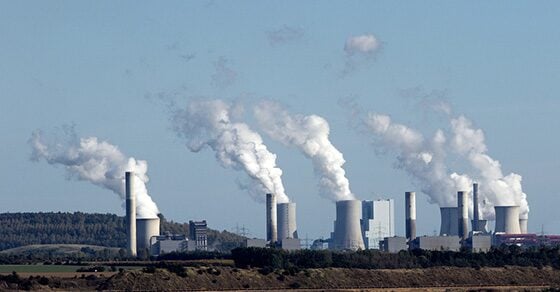A recent white paper by William Strauss, PhD of FutureMetrics LLC, looked at a strategy that could breathe life back into the dying US coal industry, and the answer comes from an unlikely place: implementing policy to support the co-firing of wood biomass pellets (biocoal) at pulverized coal plants.
Please note: While Strauss refers to “wood pellets” in his white paper, the technically correct term for the material is biocoal. True wood pellets have a lower heating value than biocoal and would actually derate power facilities if co-fired alongside traditional coal. To be technically correct, this article will refer to the material as biocoal.
Biocoal, also commonly called “black pellets,” is a synthetic form of coal produced from biomass that looks, handles, and performs like traditional coal products. Strauss claims that policy aimed at co-firing could be the answer to the woes of the coal industry.
Why This Strategy is a Huge Win
While many are quick to blame the state of the coal industry on increasing environmental regulation, many claim that a less obvious culprit has actually been at work: low energy costs resulting from the recent glut of natural gas and oil.
These low energy costs have come at great expense to the coal industry; as power facilities switch over to low cost natural gas, demand for coal has decreased, resulting in a painful demise of plant closures, aging coal infrastructure, and major unemployment.
According to the Energy Information Administration (EIA), between 2014 and 2015, coal-generated power plummeted by a staggering 226,000 gigawatt-hours, while natural gas-generated power went up by 208,000 gigawatt-hours.
In his paper, Strauss claims that legislation in place to co-fire coal with biocoal would actually create more jobs than coal-generated power alone, and would also far exceed the number of jobs associated with natural gas; according to Strauss, a 400-MW facility that co-fires 10% biocoal has an impact of about 1,757 jobs, while coal alone only results in about 1,686. Jobs created by the extraction and pipelining of natural gas fall well below at around 576.
Strauss claims that policy supporting co-firing would create guaranteed demand for coal, helping to revitalize the downtrodden industry. But it’s not just the coal industry that would benefit from such legislation; this strategy would also reinvigorate the forest products industry with a new product stream.
The US forest products industry has shown some recovery after its decline, but it’s nowhere near its former glory, leaving many looking for a solution. As Strauss claims in his white paper, co-firing could hold the key to the revitalization.
The co-firing policy would not only result in more jobs, but it would also inject substantial investments into the manufacturing of biocoal plants, along with the related engineering, construction, and hauling needed to support the industry.
Among these benefits, Strauss claims that the approach would offer a number of other advantages as well:
- Lower capital costs over new natural gas plants
- The opportunity to use existing power plants
- Flexibility in use: can be baseload or on-demand
- Reliability with no derating
- Reduced carbon emissions
- Reduced SOx, NOx and Mercury emissions
- Decreased dependence on natural gas
Processing Biomass into Biocoal
Why not just burn the biomass source directly? While biomass can be burned directly, processing it into biocoal offers significant value over raw biomass.
Transforming biomass into biocoal serves to maximize and concentrate the heating value of the product, while also improving combustion. Biocoal is also much easier and less costly to handle and transport than raw biomass, and allows facilities to run at the same capacity without derating.
To process biomass into biocoal, residuals of the forest products industry are first dried in a rotary dryer. This reduces the moisture content and improves combustion. The dried biomass is then processed in an oxygen-free environment of an indirect-fired rotary kiln to remove the volatile components.
The resulting product, biocoal, is then typically pelleted via extrusion in order to produce a product that is easy to handle and implement alongside traditional coal products.
Conclusion
As the coal and forest products industries struggle, William Strauss claims that policy on co-firing would create guaranteed demand for coal, resulting in a revitalization of both industries.
As a leader in thermal processing, FEECO provides biomass dryers and complete dryer islands for reducing moisture content in biomass fuel sources. In addition, we engineer custom rotary kilns for processing biomass into biocoal, biochar, and activated carbon. For more information, contact us today!



